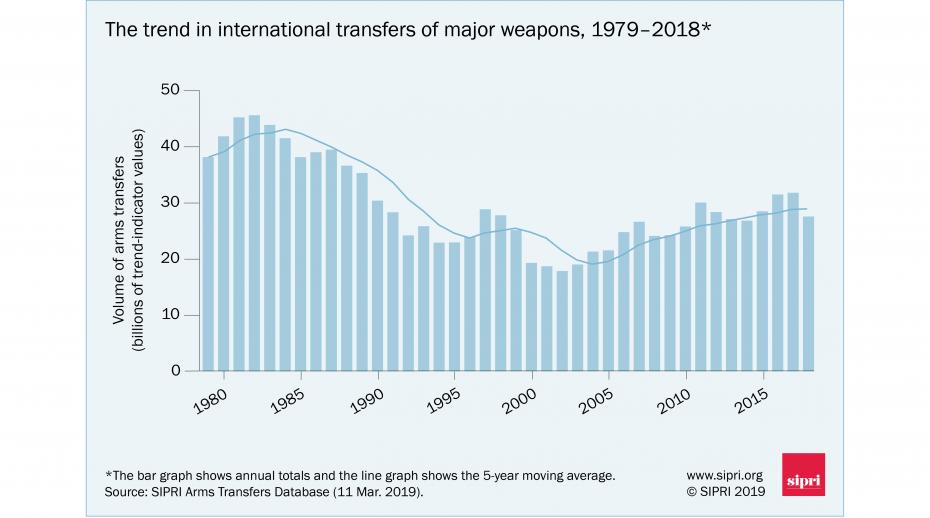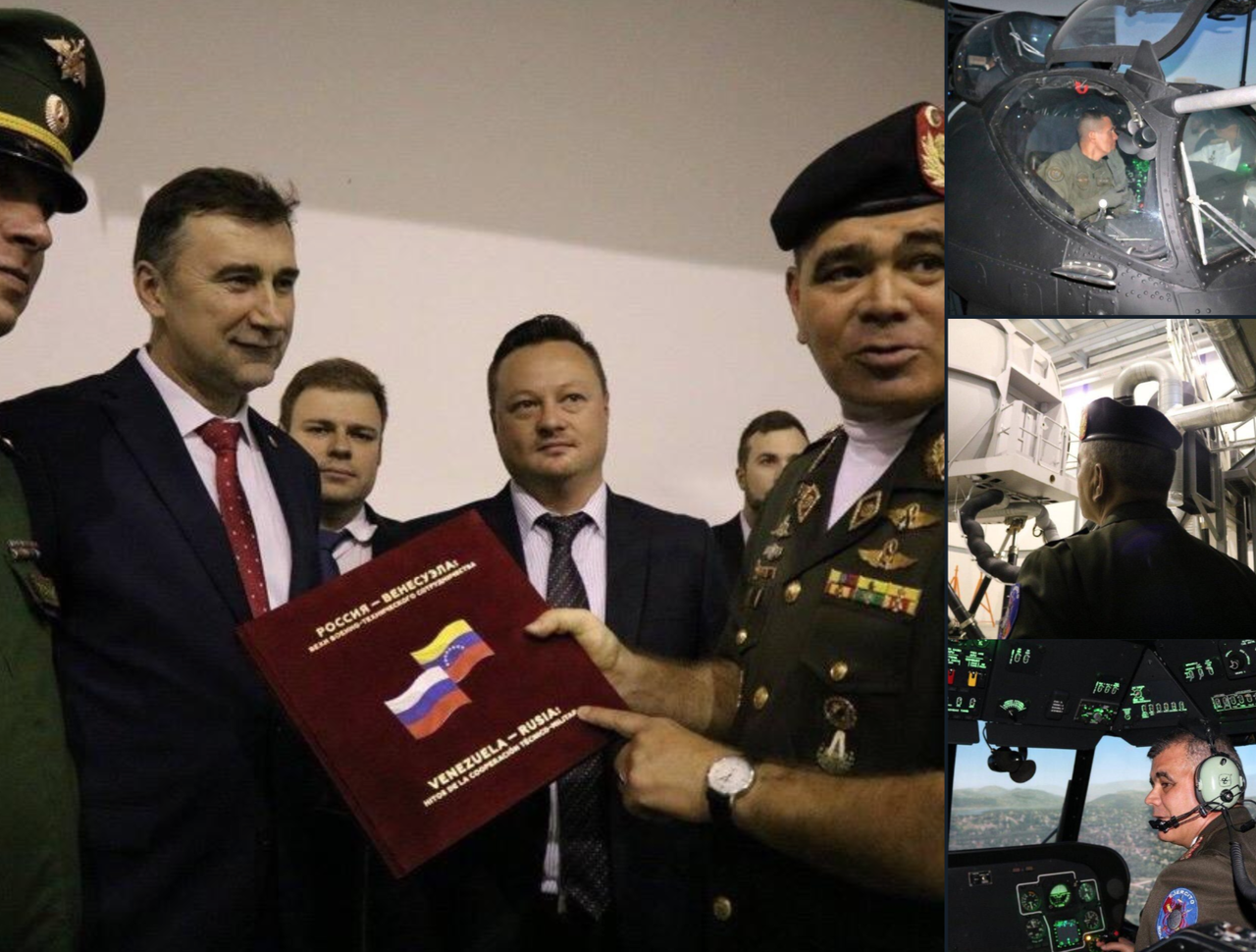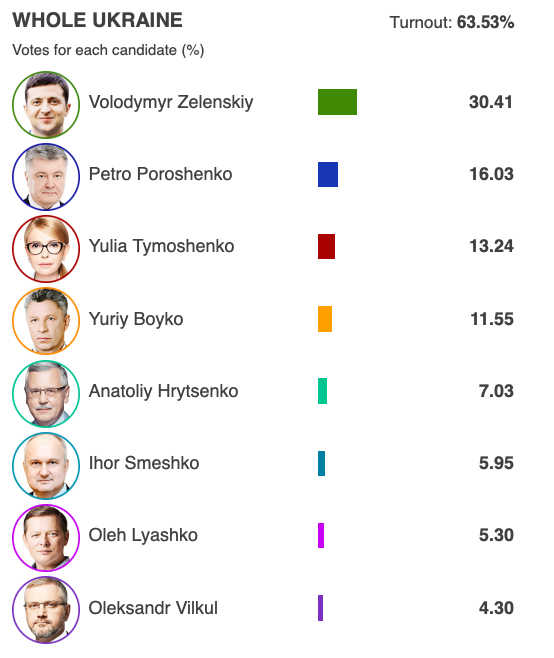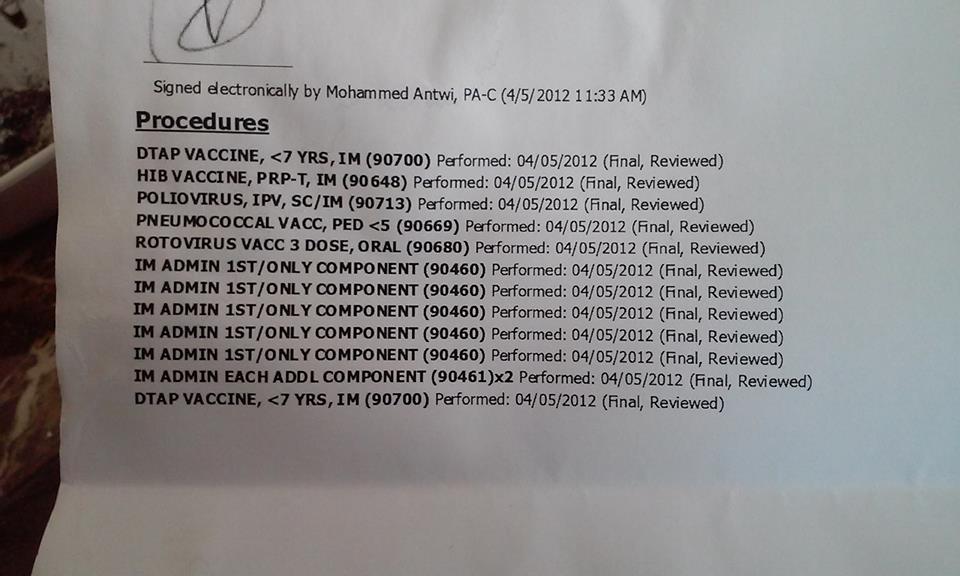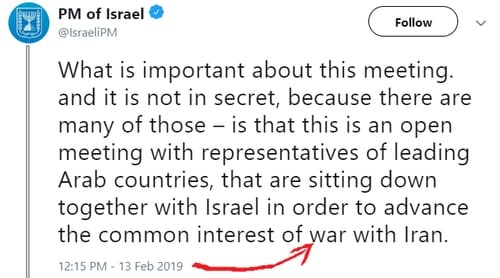On August 2, 2018 an article in the Yomiuri shimbun broke the news that Tokyo Medical University has been systematically tampering with the scores of entrance exams to benefit male applicants. The news emerged in the course of an investigation into the university administration’s bribe of a high-ranking official at the Ministry of Education, Sano Futoshi.1* Officials at the university apparently boosted the entrance exam score of Sano’s son in exchange for his help in securing a grant to improve the university’s public image. Along with this case of cronyism, it came to light that the university routinely padded the scores of all male applicants except those who had been applying for four or more years. Apparently believing that women would not do as well in the medical profession, Tokyo Medical University systematically reduced their chances of admission for at least a decade. It seems that rising rates of successful female applicants prompted university officials to impose a system of automatically increasing male applicants’ scores to reduce the ratio of female students at their institution. The revelations prompted a government investigation of 81 schools, which revealed in December 2018 that at least nine other medical faculties engaged in similar practices.2
And yet, in 2013, the university began receiving a national grant to “support women.” Over three years, Tokyo Medical University was awarded over 80 million yen (about 720,000 USD) through this grant. Two university executives at the center of the admissions scandal – former chairman Usui Masahiko and former university president Suzuki Mamoru – played key roles in the Office to Promote Diversity, founded at the university in 2016. In Usui’s opening remarks at an event to celebrate the first anniversary of the Office in 2017, he called on the university staff to promote “diversity.”3 At the time, the school presented an increase in female admissions from 26.9% to 32.4% as evidence of its efforts, even as it was actively taking steps to deny admission to women with qualifying scores.4 That meant that the university was not only taking money from the government to promote female admissions but also taking money from individual female applicants whom it artificially failed (sitting a university entrance exam in Japan costs 40,000 to 60,000 yen, about 360 to 540 USD). A group of 24 women denied admission to Tokyo Medical University since 2006 have joined with a team of defense lawyers to build a legal case against the school, which includes a demand for compensation for these fees, and potentially for additional damages.5
The male officials and others that implemented systematic discrimination at Tokyo Medical University have framed their actions as a “necessary evil.” The key reason cited as a defense for Tokyo Medical University’s decision to depress female admissions was their concern that too many female doctors would result in too few doctors at their affiliated hospitals when women left their work for marriage or childbirth. In his testimony to the legal team currently investigating Tokyo Medical University’s discriminatory admissions process, Usui said that the university systematically depressed female applicants’ scores because “as women get older, their activities as doctors decrease.”6 This rhetoric echoed the sensationalistic “Coeds Ruin the Nation Theory” enunciated in the pages of the Japanese tabloids in the early 1960s. Then, Waseda University professor of literature Teruoka Yasutaka declared his desire to set quotas to limit the number of women admitted to humanities departments because women would waste their educations and ruin society.7 Now, male administrators at a number of medical universities secretly impose quotas fearing that too many women in the profession will ruin medicine.8
Tokyo Medical University’s administrators sought approval for their actions through appealing to legitimate concerns about a lack of medical professionals in Japan. But rather than lobbying to increase the quotas imposed by the Japan Medical Association on the number of doctors trained, or addressing many of the workplace issues facing overwhelmed and understaffed hospitals, these powerful administrators penalized individual women, holding them responsible for a multifaceted social problem that was not of their own making.9 On November 12, 2018, Education Minister Shibayama Masahiko noted that a government investigation had found evidence of gender bias in the admissions processes of multiple medical faculties.10 The results announced in December confirmed these suspicions, and the government has subsequently cut off subsidies to Tokyo Medical University and reduced those to Nihon University, Fukuoka University, Iwate Medical University, Juntendo University, Kanazawa Medical University, Kitasato University, and Showa University based on similar manipulations of entrance exams.11

A candlelight vigil held in front of Juntendo University on December 14, 2018 to protest the insitution’s discrimination against women in its entrance examination policies. Image courtesy of the Association to Support Victims of Entrance Exam Discrimination at Tokyo Medical University and Elsewhere (Source: APJJF)
This scandal is a case study related to several stubborn problems facing Japanese society today. It reflects how a more general context of gender discrimination threatens to impede solutions to the crises facing healthcare in Japan, and how recent efforts to counter discriminatory practices and encourage “diversity” lack accountability. This article addresses how the gender gap in the medical field points to deeper problems in the profession as a workplace, how recent research suggests that gender diversity may improve medical outcomes in terms of patient care, and how this entrance-exam scandal highlights the inadequacy and lack of accountability behind recent efforts to promote “diversity.”
Healthcare as Work
The conditions under which medical professionals labor in Japan are less than ideal. A study published in 2015 on the difficulties facing women in the medical profession found that it was not only women-specific issues, but also “poor working conditions involving long working hours” that result from “a chronic, nationwide medical workforce shortage” that negatively impacted female doctors’ physical and mental health.12 Indeed, the problems noted adversely affected men as well as women medical professionals. The stresses on the medical profession result from many factors, including government restrictions on the number of medical students, while female doctors face additional challenges. Women find their attention divided between their professional and their familial responsibilities because of longstanding assumptions about female domestic labor. Such social expectations hinder gender equality in many societies, but this is a particularly stubborn problem in Japan. The country consistently rates poorly in the Global Gender Gap Index. In 2018, Japan ranked 110 out of 149 countries in terms of gender parity, the lowest ranking of the Group of Seven industrialized nations.13 Anecdotal evidence about the entrance-exam interviews conducted at other medical universities suggests that prospective female students also face questions not only about their professional but also their personal goals, presumably because schools want to know if domestic commitments will interfere with their careers.14 Medical universities run hospitals, and they fear a staffing shortage if women – as they are often expected to do – leave the workplace to care for their families.
On the other hand, government policy depresses the number of doctors certified in order to control medical expenditures and prevent a possible surplus of doctors. The Ministry of Health, Labour and Welfare restricts the number of physicians and imposes a medical student quota. Yet Japan’s problem is clearly a shortage of doctors. In response to severe shortages in 2007, the government increased the maximum medical school enrollment quota from 7,625 to 8,828. Shortages nevertheless persist. In terms of number of physicians per person, Japan has 2.4 per 1,000 people. This places it 27th out of 31 OECD countries surveyed, just behind the United States (2.6 doctors per 1,000 people) and on par with Poland and Mexico.15 At the same time, Japan currently vies with Israel for the lowest rate of medical graduates: 6.8 per 10,000 inhabitants in 2017.16 The specialties with the most severe shortages are obstetricians, pediatricians, emergency physicians, and surgeons. Even though current estimates predict that the number of physicians per 1,000 population will rise to 3.14 in 2035, corresponding rise in demand with Japan’s aging population’s medical needs have prompted calls for strategies to increase the number of doctors.17
A study conducted by Japanese researchers who examined trends from 1996 to 2006 to identify the primary causes of the shortage of surgeons in Japan concluded that many general surgeons at hospitals, both female and male, left their positions not to fulfill childcare responsibilities but for another job or another medical specialty in their 30s and 40s.18 This contributed to a general lack of hospital surgeons. The study noted that “poor working conditions facing hospital doctors” may account for this trend. Studies of doctors’ average working hours in Japan find a weekly median of 54.4 to 63.3 working hours. However, more hospital doctors in Japan work more than 60 hours per week than do workers in any other profession.19
Without expanding the number of physicians, it is difficult to maintain quality care standards while ensuring that women can take even the legally guaranteed maternity leave period of six weeks prior to the expected birth date and eight weeks after birth, let alone to support needs of medical professionals with childcare obligations. The most recent statistics published by the Japan Medical Association found that 50.1% of the medical facilities surveyed offered no childcare.20 Simply leaving the burden of understaffing to male and child-free female colleagues results in a culture of resentment when already heavy workloads become even more onerous if women take time away from work to have and take care of children. Because of this perceived inconvenience women may pose to co-workers when taking maternity leave, many of the physicians (65%) who participated in a survey after the Tokyo Medical University scandal broke responded that, although they did not necessarily approve of the university’s decision to actively tamper with scores, they understood the gendered logic in depressing the number of female applicants, since “it burdens others [in the workplace].”21
There is a gender gap in terms of working long hours in the medical profession, and this gap is used by some to justify depressing rates of female doctors to maintain staffing levels at hospitals. The Ministry of Health, Labour and Work found that 41 percent of male physicians and 28 percent of female physicians work 60 or more hours a week, and 11 percent of male physicians and 7 percent of female physicians work more than 80 hours a week. Among men in their 30s, 56.9 percent work over 60 hours a week.22
These long hours, however, are also linked to health problems among doctors. The government definition of karōshi [death from overwork] is the sudden death of an employee who works an average of 65 hours per week or more for more than four consecutive weeks, or for 60 hours or more for more than eight weeks. A recently published study of first-year residents at 250 training hospitals in Japan in 2011 found that residents working 80-99.9 hours per week had a 2.83-fold higher risk of developing depression than those working less than 60 hours a week, while those working 100 hours or more a week had a 6.96-fold higher risk. Of the 1,241 first-year residents surveyed by the study, 7.8 percent worked 100 hours or more a week, of which 45.5 percent displayed “clinically significant depressive symptoms” after three months.23 Another study conducted in 2004 found that residents in Japan worked a mean of 84.9 hours a week, and 16.4 percent worked more than 100 hours a week.24
Aside from sheer number of hours, doctors in Japan are often required to work extraordinarily long shifts. When working night duty, they may work a daytime shift on either end, sometimes working almost 36 consecutive hours at one go. In July 2015, when an obstetrics and gynecology resident physician in the Shinagawa Ward of Tokyo killed himself, a subsequent investigation of hospital records showed that he had logged 143 to 208 hours of overtime in the six months before his suicide, and the four monthly night shifts he worked sometimes contributed to 30-hour shifts.25
Of course these problems are not limited to the medical industry in Japan. In the United States, the conversation often focuses on “burnout” – emotional exhaustion and cynicism in one’s work. Studies have found that resident physicians in the United States, who also work long hours, reported rates of burnout symptoms (45.2% of the 3588 second-year resident physician respondents).26 Doctors in the United States have higher rates of suicide than any other profession.27 Critics of U.S. healthcare point out that Japan might serves as a potential model for the U.S., particularly considering how universal coverage and general affordability have benefited patients in Japan.28 But Japan also faces rising demand that will place more and more stresses on the system as it has existed so far, and on the doctors who work within that system.
There have been calls to reduce physicians’ workloads by distributing more tasks to nursing staff, but Japan’s aging society has created shortages in nurses as well. Even though Japan has a relatively large number of nurses – 9.06 per thousand residents, more than the 8.30 OECD average density – Japanese health care has faced a nursing shortage since the 1990s because of rapidly rising demand.29 Although demand for care workers is high, wages are relatively low for nurses and certified care workers, perhaps because it is also a feminized workforce, while extensive pre-employment training must be paid for privately. Fewer people see care work as an attractive career option. In 2007, only 16,696 people applied for 26,095 places at 419 training institutes for certified care workers.30 The government has agreements with Indonesia, the Philippines, and Vietnam to accept foreign nurses, but the language and nursing training requirements set a high bar to clear; in 2016, among the participants in the “Indonesia-Japan collaboration on the enhancement of nursing competency through an in-service training” program, 104 of 209 (49.8%) who attempted the national exam to become a certified care worker passed, while only 65 of 447 (14.5%) who attempted the national nursing exam passed. These are both far below the national average pass rates of 72.1% for the certified care worker exam and 88.5% for the national nursing exam.31
There are only limited studies about burnout and job satisfaction among physicians in Japan, although both appear related to working conditions and seem to contribute to labor shortages at government hospitals and university hospitals.32 A 2007 found that burnout and poor mental health were directly related to job dissatisfaction and short sleeping time among doctors.33 Researchers examining physician retention at hospitals found a high correlation between frequent night duty shifts and a desire to change hospitals.34 The study found that almost 35 percent of the respondents to their survey wanted to change hospitals, and the rate was particularly high for physicians at government hospitals and university hospitals (44.3 percent and 41.5 percent respectively).35 While this study did not distinguish between male and female respondents, it did emphasize that the medical field needs to think about approaches that will allow it to retain its workforce and create a workplace in which doctors find their work satisfying in order to provide sustainable and high-quality health care.
The discussions coming out of the admissions gender discrimination scandals frame women as less committed to the workplace but does not cite the health hazards of overcommitment to the workplace. Gendered ideas about women’s responsibilities in the home and the current workplace demands in the medical field require women physicians with children to dramatically reduce their working hours. At the same time, in a work culture that encourages overwork, the demographic most vulnerable to accumulated workplace fatigue is actually male workers in their 30s and 40s. As Scott North has described in his study of death from overwork (karōshi), karōshi victims “come from all walks of life, all classes, and all occupational categories,” but are overwhelmingly male because of the gendered ideology linking masculinity and overwork.36 So a conversation about how to improve the conditions under which those in the medical profession labor is not just a conversation about improving women’s lives, although the discussion needs to include analyses of how women experience the squeeze between a workplace culture that demands long hours and societal expectations that they manage domestic and care obligations.
The pronounced M-curve in female doctors’ employment – a mid-career dip in rates of women working in the profession – is most often the result of life events like childbirth (responsible for 70 percent of female physicians’ decision to take leave) and child care (38.3 percent). According to the Ministry of Health, Labour and Work’s statistics, this means that the employment rates for women doctors reach a low of 73.4% percent twelve years after becoming certified (male doctors have an 89.9 percent employment rate twelve years after certification), then creeps up but does not match the rates of male physician employment until both are in their seventies and employment rates for both are on a downward slope. At this point, interestingly, employment rates for women overtake those for men, and there are 5-10 percent more female doctors still working in their late 70s and through to their 90s than there are male doctors. The M-curve for lifetime female employment is not dissimilar from a wider gendered tendency in employment in Japan. In the case of female doctors, however, 60.4 percent return to work within a year of taking leave.37

Source: Ministry of Health, Labour and Welfare38
In short, many female doctors reduce working hours when they gave birth to children. However, the majority of female doctors who work while raising infants still work full-time – 76.5% in 2017 – somewhat lower than the 88.8% of working female doctors without children who work full-time. However, the most significant difference between the working hours of female doctors with and without children is in the hours indicated by “full time.” In 2017, of the female doctors with children ages 6-12, almost half (49.3%) worked under 40 hours a week, while only 4.7% worked 65 hours or more a week. Only about one-fifth of female doctors without children worked under 40 hours a week, while 27% of female doctors without children worked between 48 and 60 hours a week, 18% worked between 60 and 65 hours a week, and 22.6% of them worked 65 hours or more a week.39
Domestic labor in Japan is assumed to be women’s labor, and working women with children find that housework burdens them with a “second shift.” A 2012 study found that even female doctors without children spent more of their time on housework (15 hours a week) than male doctors with children (three hours a week). Unsurprisingly, female doctors with children did the most housework (36 hours a week including childcare). Adding up total work time – paid medical work and unpaid housework – demonstrates that female doctors worked the longest weeks on average, putting in over 70 hours at home and at work. While men without children worked longer hours outside the home, their paucity of housework and childcare responsibilities put their total work week at just a little over 50 hours on average.40 A recent study found that female medical students in Japan feel pressure to accommodate family responsibilities, and by the time they finish their clinical internships in their final year of medical school, their understanding is that they must choose to prioritize either family or medicine, whereas their male peers feel no similar conflict and pursue their careers based exclusively on their medical practice.41 Tokyo Medical University’s logic in reducing female admissions reflects a calculated strategy based on current gendered divisions of labor and a culture of overwork in which men can participate most fully in their professions because they participate so little in the household.
Reducing female medical school students in an effort to retain hospital physicians is not the solution to a medical industry under stress. When we think of women as a liability because of their theoretical future childbirth and care leave, we focus on only one aspect of bodies and when bodies can or cannot work. Perhaps more importantly, by defining the value of work in terms of full-time work that is inherently exhausting, with punishing hours and high levels of stress, we accept working conditions that are not healthy for any bodies, female or male. As Kyoko Tanebe put it in her editorial calling for an examination not only of gender discrimination but also of a health care funding crisis: “The current system relying on doctors who can withstand overwork is vulnerable, both as a system of labor and in terms of medical safety.”42
Quality of Health Care
Japan is certainly not the only society facing a “crisis in care” that is simultaneously a labor problem and a public health issue as well as an issue of gender discrimination. The resounding criticism of the handling of gender issues in the Japanese health care system from the Western media, in particular regarding this issue, has prompted different reactions in Japan; there are expressions of shame at Japan’s failure to properly implement “modern” global standards for gender equality, but there are also accusations of Western, particularly American, hypocrisy. After all, while this scandal provides a headline-worthy smoking gun of most certainly illegal systematic sexism, the United States’ global rankings for female participation in the medical field are only slightly better than those of Japan. Japan ranks last among the 34 member countries that make up the OECD for share of female doctors (20.3% in 2015). But the United States is fourth lowest (34.1% in 2015), well below the OECD average of 46.1%.43
This is a pressing issue for those concerned about the quality of medical care, since there is evidence that more women in the medical field makes for better medicine. A study of hospitalized Medicare beneficiaries found that “elderly hospitalized patients treated by female internists have lower mortality and readmissions compared with those cared for by male internists.”44 This study estimated that, annually, “approximately 32,000 fewer patients would die if male physicians could achieve the same outcomes as female physicians.”45 Other studies have found that female doctors performed better than male doctors in the context of diabetes care.46
In an article in The Atlantic, Ed Yong introduced research showing that more US patients suffering from a heart attack, particularly female patients, die when treated by male doctors than by female doctors. It is uncertain why this is, but it suggests that female patients stand to gain most when they have access to female doctors, and that male physicians who work with female colleagues did better at treating female heart-attack sufferers. This is not to say that women are inherently more attuned to nurturing and care, but the findings do suggest, as the University of Chicago’s Vineet Arora noted, that a gender-diverse work environment is a plus and “that female physicians are an asset not just for their patients, but for their male colleagues, too.”47
The positive impact of gender diversity can also be found in medical research. A recent study that analyzed 1.5 million medical-research papers published between 2008 and 2015 found that female co-authorship increased the likelihood that research addressed gender differences. This is important because neglecting gender-related differences in disease and treatment outcomes affects health outcomes, sometimes with life-threatening consequences.48
Similarly, if crushing workloads are the expectation for all medical workers, that presents another issue for patient safety. Several studies have found a higher risk of medical error and also traffic accidents among medical staff who have been working long hours.49 Such studies expose the links between the quality of working conditions in the medical industry and the quality of healthcare.
The problems created by a shortage of hospital physicians and a maldistribution of those physicians in Japan are also particularly dangerous for some of the most medically vulnerable. One high-profile case, in which nine hospitals turned away a pregnant woman who suffered a miscarriage after the ambulance carrying her collided with a minivan on its way to a tenth hospital, prompted investigations about hospitals refusing to provide emergency care for pregnant women. A subsequent survey of 27 prefectures found that between 2004 and 2006, there had been 2,780 cases in which a pregnant woman had been denied admission by one or more hospitals. Of those, in at least 191 cases a pregnant woman transported by ambulance had been turned away by five or more hospitals because of a lack of specialist staff or beds.50
Gendered Stereotypes
As the points outlined above show, thinking about how to improve the healthcare industry in the future would benefit from thinking further about the healthcare industry as a workplace and about improving the overall quality of healthcare. This requires a deep questioning of gendered ideologies that assign women the roles of care and support, both in the home and in the hospital, while simultaneously dismissing women’s capabilities in what are considered more prestigious “specialist” positions. It would require recognition of women’s outstanding performance in significant areas of health care, as well as the burdens of discrimination under which they labor.
The consequences of gendered stereotypes are more serious than simply whether individual women entering the workforce can advance. Japan has the fourth-highest relative poverty rate among OECD countries, and the gender gap in wages and in full-time employment has created particularly vulnerable groups of women.51 Most single parents are mothers, and the poverty rate for working single-parent families is 56 percent. This is due in part to the gender wage gap, which is the highest in the OECD.52 The current public pension system offers generous benefits to married women and widows, but penalizes women who divorced or were never married, and hence are unable to access a pension based on a man’s “breadwinning” wages. A recent study noted that, since the 1980s, the marriage rate decreased and the divorce rate increased significantly, with the consequence that more and more elderly women will face the risk of poverty thus increasing poverty rates in general. Already in 2010, poverty rates for elderly women were almost double those of elderly men: 11.1% versus 6.1%. However, projections put the poverty rate of elderly women at 25% in the near future, more than double the predicted 10% for elderly men. For women who were never married or are divorced, the poverty rates are predicted to be 50%.53
The government-driven rhetoric of “creating a society in which women shine” does little to challenge a dominant narrative highlighting women’s unique relationship to care and femininity that perpetuates this kind of gendered and imbalanced poverty and precarity. In a September 2014 speech to the World Assembly for Women in Tokyo in which he outlined his vision for promoting women in the workplace, Prime Minister Abe Shinzō provided examples of the kinds of contributions he thought women could “bring to corporate management.” He cited examples of female employees who had suggested car doors that open wider to accommodate children, or had collaborated to design laptop computers that one can open without destroying a manicure. Abe concluded that “The most difficult part may be transforming the division of roles based on gender, something that is, unwittingly, firmly ingrained within us.”54 However, Abe’s own interpretation of that “certain perspective that only women can provide” – the woman’s touch – is precisely based on an ingrained stereotype of women’s abilities and women’s interests.
The admissions scandal at Tokyo Medical University also exposed the emptiness of various recent initiatives to promote greater gender diversity. As mentioned above, Tokyo Medical University received grant money to “promote women’s activities” and Suzuki Mamoru, then-president of the university and an initiator of the quotas on female admissions, publicly endorsed policies advocated by the Gender Equality Bureau Cabinet Office’s annual “General Assembly of Male Leaders.”55 The quotas Suzuki imposed sit uneasily alongside the “action plan” published on the Bureau’s homepage, which includes “disrupting the status quo” by taking “every chance to ask the questions below and advance changes in the mindset in the whole organization: Why are there no women? Why are women 30% or less? Why isn’t the ratio of men to women fifty-fifty (50:50)?” That he publicly subscribed to such initiatives while actively imposing a policy to cap female admissions at 30% required a powerful cynicism. Although he may have sympathized with the diversity ideal in the abstract sense, he sabotaged it in fulfilling his responsibility to train physicians.
It is in the gap between an often tone-deaf rhetoric at the level of the national gender equality initiatives and a complete lack of accountability in governance that this systematic gender discrimination persists. This story doesn’t seem limited to a few powerful men at one institution. Observers of the stubborn imbalance in acceptance rates between men and women to medical schools had already voiced suspicions that universities were controlling the student ratio. In an August 2017 report for the Japan Joint Association of Medical Professional Women, Kyoko Tanebe noted that the rates for female admissions to medical schools seemed artificially depressed over the last fifteen years in light of recent trends in other fields. So-called “cram schools” which prepare students for university admissions exams and obsessively track these statistics also observed similar gender gaps in the admissions rates at other schools. A representative from Ace Academy, a cram school for medical universities, noted the lopsided pass rate for young men and women at St. Marianna Medical University, Showa University, and Nihon University in the second round of entrance exams, which consist of interviews and written essays, in spite of general parity on earlier rounds of subject exams.56 Jutendo University was also suspected of rigging entrance exam results to favor male applicants.57 Others have called this depression of female acceptance rates to medical schools an open secret. The Ministry of Education’s nation-wide investigation into the admissions practices of 81 medical faculties confirmed these suspicions and found that several other medical faculties engaged in similarly suspect admissions’ practices, including Nihon University, Juntendo University, Showa University, Iwate Medical University, Kanazawa Medical University, Kitasato University, Kobe University, and Fukuoka University.58
Perhaps this scandal will offer an opening to debates about how to address long-standing gendered inequalities in the medical field and beyond. One hopes it will also initiate further debates about the social costs of such discrimination on the medical profession as a workplace and a place of care.
*
Note to readers: please click the share buttons below. Forward this article to your email lists. Crosspost on your blog site, internet forums. etc.
Our thanks to The Asia-Pacific Journal: Japan Focus for having brought this important article toour attention
Chelsea Szendi Schieder is an Associate Professor in the Faculty of Economics at Aoyama Gakuin University in Tokyo, Japan. She writes contemporary histories about contentious politics for academic and general audiences. Her book on the gendered politics of the postwar student movement in Japan, entitled Co-Ed Revolution: The Female Student in the Japanese New Left, is forthcoming with Duke University Press.
Notes
1 Japanese names are written according to Japanese conventions, with last name first, except in cases in which the last names are published last in scholarly journals and English-language publications.
2 “Japan medical schools ‘rigged women’s results.’ (https://www.bbc.com/news/world-asia-46568975) BBC News (December 14, 2018) (accessed January 31, 2019).
3 “ ‘Daibaashiti suishin honbu kaisetsu kinen, Tokyo Ika Daigaku danjo kyōdō sankaku sokushin seminaa’ ga 1-gatsu 11-nichi ni kaisai saremashita [‘Commemoration of the founding of the diversity promotion headquarters, Tokyo Medical University gender equality promotion seminar’ held on January 11th]” Tokyo Medical University website (January 13, 2017) (accessed August 10, 2018).
4 “Tokyo Idai ni ‘josei katsuyaku’ hojo 8000 man en genten giwaku no jiki, kuni kara 3 nen de kōfu [Tokyo Medical University received a government grant of 800 million yen for three years to support “women’s activities,” a period in which it is suspected of reducing scores]”Tokyo shimbun (August 4, 2018) (accessed August 6, 2018).
5 “Women demand compensation from Tokyo Medical University over rigged entrance exams” The Japan Times (October 30, 2018) (Accessed November 2, 2018)
6 “Chōsa hōkokusho [Inquiry report]” Gakkō hōjin Tokyo Ika Daigaku naibu chōsa iinkai [Tokyo Medical University, Inc. internal inquiry committee] (August 6, 2018) (accessed August 10, 2018).
7 Hara Kimi, “Joshi kyōiku no tenkai to shakai hendō [The development of women’s education and social change]” in Shakai hendō to kyōiku [Social change and education] (Tokyo: Tokyo Daigaku Shuppankai, 1976), 51–69; Nobuyuki Kuroda and Michiko Tanaka, Joshi gakusei [Women’ s education] (Tokyo: San’ichi Shobo, 1969), 158–161.
8 “Japan medical schools ‘rigged women’s results.’ (https://www.bbc.com/news/world-asia-46568975) BBC News (December 14, 2018) (accessed January 31, 2019).
9 “Tokyo Idai no kokusai nintei torikeshi: hyōka kikō, nyūshi fusei de [Tokyo Medical University international certification canceled: citing evaluation mechanism, unfair entrance exams]” Nikkei shimbun(November 22, 2018) (accessed December 4, 2018)
10 “Fuksuu igakubu, nyūshi de danjo ni sa o settei daigakume wa meigen sezu [Multiple medical faculties established gender gaps in entrance exams, school names not announced]” Asahi shimbun (October 12, 2018) (accessed December 4, 2018)
11 “Government cuts off subsidies to Tokyo Medical Unviersity over entrance exam discrimination” The Japan Times (January 22, 2019) (Accessed January 30, 2019)
12 Kyoko Nomura, Yuki Yamazaki, Larry Gruppen, Saki Horie, Masumi Takeuchi, Jan Illing. “The difficulty of professional continuation among female doctors in Japan: a qualitative study of alumnae of 13 medical schools in Japan.” BMJ Open (2015), 5(3): 1-7.
13 “Japan crawls up to 110th in global gender gap ranking but women’s participation still low” Mainichi Japan (December 18, 2018) (Accessed January 30, 2019)
14 Tanaka Shino, Kinkozan Masako. “Tōkyō idai dake janai? Nyūshi de no danjo sabetsu. Ishira ga shōgen “idai zentai ni aru to makoto shiyaka ni uwasasareteita” [Not just Tokyo Medical University? Gender discrimination in entrance examinations. Doctors’ testimony: ‘There are plausible rumors that it happens at all medical universities’]” Huffpost Japan (August 2, 2018) (Accessed January 30, 2019)
15 OECD (2018), Doctors (indicator). doi: 10.1787/4355e1ec-en (accessed on 20 November 2018)
16 OECD (2018), Medical graduates (indicator). doi: 10.1787/ac5bd5d3-en (accessed on 20 November 2018)
17 Koichiro Yuji, Seiya Imoto, Rui Yamaguchi, et al. “Forecasting Japan’s Physician Shortage in 2035 as the First Full-Fledged Aged Society” PLOS ONE (2012), 7(11).
18 Yasuhiro Mizuno, Hiroto Narimatsu, Yuko Kodama, Tomoko Matsumura, Masahiro Kami. “Mid-career changes in the occupation or specialty among general surgeons, from youth to middle age, have accelerated the shortage of general surgeons in Japan.” Surgery Today (2014) 44: 601-606.
19 “Doctor’s suicide after monthly overtime exceeded 200 hours recognized as work-related” Japan Times (August 10, 2017) (accessed December 4, 2018)
20 “Josei ishi no kinmu kankyō no genkyō ni kan-suru chōsa hikaku shōsai han [Investigation into present conditions of women doctors work environment: comparative detailed edition]” Nihon ishikai danjo kyōdō sankaku iinkai / Nihon ishikai josei ishi shien sentaa [Japan Medical Association gender equality plannning committee / Japan Medical Association women doctor support center] (June 2009) (accessed on 20 November 2018)
21 “Ishi 65% ‘joshi genten rikai dekiru’ jinzai kaisha netto chōsa [65% of doctors: ‘understand reducing women’s scores’ on an HR recruitment agency’s online survey]” Asahi shimbun (August 8, 2018) (Accessed August 30, 2018).
22 “Josei ishi kyaria shien moderu fukyū suishin jigyō no seika to kongo no torikumi ni tsuite / shiryō 3 [On the results and future initiatives of the project to promulgate and promote career support for female doctors / document 3]” Ministry of Health, Labour and Welfare (March 14, 2018) (accessed November 20, 2018)
23 Ryoko Ogawa, Emiko Seo, Takami Maeno, Makoto Ito, Masaru Sanuki, Tetsuhiro Maeno. “The relationship between long working hours and depression among first-year residents in Japan.” BMC Medical Education (2018) 18: 50.
24 Tetsuhiro Maeno, Asumi Nakamura, Takami Maeno, et al. “Shinrinshō kenshū seido ni okeru kenshūi no sutoresu [Resident stress in the new postgraduateclinical training system].” Igaku kyōiku [Medical Education]. (2008) 39(3): 175–82.
25 “Doctor’s suicide after monthly overtime exceeded 200 hours recognized as work-related” Japan Times (August 10, 2017) (accessed December 4, 2018)
26 Liselotte Dyrbye, Sara Burke, Rachel Hardeman “Association of Clinical Specialty with Symptoms of Burnout and Career Choice Regret Among US Resident Physicians” JAMA 2018 320(11): 1114-1130.
27 Brendan Murphy, “AMA seeks more data on physician, medical student suicide” AMA Physician Health(November 13, 2018) (accessed December 3, 2018).
28 Tomoko Otake “Japan’s buckling healthcare system at a crossroads” The Japan Times (Feburary 19, 2017) (accessed December 4, 2018)
29 Sakamoto H., Rahman M, Nomura S, Okamoto E, Koike S, Yasunaga H et al. “Japan Health System Review” Asia Pacific Observatory on Health Systems and Policies. Health Systems in Transition Series (Vol 8, No 1): 72, 86.
30 Ibid. 139.
31 Ibid., 90-91.
32 Makiko Ozaki, Seiji Bito, Shinji Matsumura “Developing a Japanese hospital physician satisfaction scale” International Journal of Health Care Quality Assurance (2008) Vol. 21, Issue 5: 517-528.
33 Yasuharu Tokuda, Keiko Hayano, Makiko Ozaki, Seiji Bito, Haruo Yanai, Shunzo Koizumi “The Interrelationships between Working Conditions, Job Satisfaction, Burnout and Mental Health among Hospital Physicians in Japan: a Path Analysis” Industrial Health (2009) 47: 166-172.
34 Kato Ken, Kazunobu Yamauchi, Makoto Miyaji, et al “Factors relating to doctor’s desire to change hospitals in Japan.” International Journal of Health Care Quality Assurance. Vol. 25, No. 1 (2012): 19-40, 35.
35 Ibid., 27.
36 Scott North, “Karōshi Activism and Recent Trends in Japanese Civil Society” in Going to Court to Change Japan: Social Movements and the Law in Contemporary Japan. Ed. Patricia Steinhoff (Center for Japanese Studies, The University of Michigan: 2014): 45-72, p. 47.
37 “Josei ishi kyaria shien moderu fukyū suishin jigyō no seika to kongo no torikumi ni tsuite / shiryō 3 [On the results and future initiatives of the project to promulgate and promote career support for female doctors / document 3]” Ministry of Health, Labour and Welfare (March 14, 2018) (accessed November 20, 2018)
38 “Josei ishi kyaria shien moderu fukyū suishin jigyō no seika to kongo no torikumi ni tsuite / shiryō 3 [On the results and future initiatives of the project to promulgate and promote career support for female doctors / document 3]” Ministry of Health, Labour and Welfare (March 14, 2018) (accessed November 20, 2018)
39 “Josei ishi no kinmu kankyō no genkyō ni kan-suru chōsa hikaku shōsai han [Investigation into present conditions of women doctors work environment: comparative detailed edition]” (https://www.med.or.jp/joseiishi/2018hikakusyosai.pdf) Nihon ishikai danjo kyōdō sankaku iinkai / Nihon ishikai josei ishi shien sentaa [Japan Medical Association gender equality plannning committee / Japan Medical Association women doctor support center] (June 2009) (accessed on November 20, 2018)
40 Kosuke Yasukawa and Kyoko Nomura. “Ishi ni okeru seibetsu yakuwari bundan: shinryō jikan to kaji rōdō jikan no danjo kikaku [The division of labour by sex among Japanese physicians: comparison between men and women in time spent on clinical care a and time spent on housework]” Igaku kyōiku [Medical Education] (2012): 42: 315-319.
41 Aoki Hiroe, Hoshino Naoko, Kanda Asuka et al. “Danjo igakusei wa dono yōna kyaria ninshiki o yūshiteiru no ka? Intabyū chōsa kara miete kita mono [How do male and female medical students perceive their own career? Implications from a student viewpoint]” Nihon puraimari kea rengō gakkaishi [Journal for the Japanese Primary Care Association] (2016) 39(4): 191-204.
42 Kyoko Tanebe, “Japan’s medical school scandal must prompt health care funding debate,” Nikkei Asian Review. (August 17, 2018) (accessed August 31, 2018).
43 “Women make up most of the health sector workers but they are under-represented in high-skilled jobs.” OECD (March 2017) (accessed November 20, 2018).
44 Yusuke Tsugawa, Anupam Jena, Jose Figueroa, John Orav, Daniel Blumenthal, Ashish Jha. “Comparison of Hospital Mortality and Readmission Rates for Medicare Patients Treated by Male vs Female Physicians.” JAMA Internal Medicine (Feb. 2017) 117:2: 206-213.
45 Ibid., 212.
46 Kim C, McEven LN, Gerzoff BR, et al. “Is physician gender associated with the quality of diabetes care?” Diabetes Care. (2005) 28(7): 1594-1598; Berthold KH, Gouni-Berthold I, Bestehorn KP, Böhm M, Krone W. “Physician gender is associated with the quality of type 2 diabetes care.” J Intern Med. (2008) 264(4): 340-350.
47 Ed Yong, “Women more likely to survive heart attacks if treated by female doctors” The Atlantic (August 6, 2018) (accessed August 15, 2018)
48 “Gender Perspectives” Nature. Vol. 553 (4 January 2018), 119.
49 Ken Kato, et al “Factors relating to doctor’s desire to change hospitals in Japan.” International Journal of Health Care Quality Assurance. Vol. 25, No. 1 (2012): 19-40, 12.
50 “191 multiple refusals of pregnant women found.” The Japan Times (Sept. 28, 2007) (Accessed Nov. 20, 2018) In the United States, the law requires all hospitals with emergency rooms to care for women in labor, although some rural facilities without obstetrics units violate this law. Julie Lasson-Fromowitz, “Despite law, hospitals turn away women in labor” Courier Journal (March 3, 2017) (Accessed March 1, 2019)
51 Relative poverty means that a household earns an income that is less than fifty percent of the average median incomes.
52 Alana Semuels, “Japan is no place for single mothers” The Atlantic (September 7, 2017) (accessed August 8, 2018).
53 Seiichi Inagaki. “Dynamic Microsimulation Model of Impoverishment Among Elderly Women in Japan” Frontiers in Physics (March 14, 2018) (accessed September 10, 2018).
54 Abe Shinzō, “Opening Speech by H.E. Shinzo Abe, Prime Minister of Japan, at the Open Forum, World Assembly for Women in Tokyo” (presented at the World Assembly for Women, Tokyo, Japan, September 12, 2014).
55 There is not an equivalent group for “female leaders,” but the Gender Equality Bureau began holding events to train women for leadership in 2017. “Josei riidaa ikusei [Training female leaders]” Gender Equality Bureau Cabinet Office (accessed December 4, 2018).
56 “Igakubu no josei sabetsu, tarōsei sabetsu mondai matome” Igakubu juken baiburu October 18, 2018 (accessed December 4, 2018).
57 “Jutendo and Showa universities’ medical faculties suspected of rigging entrance exam results based on gender” () Japan Times (October 14, 2018) (accessed December 3, 2018)
58 Yajima Daisuke and Doi Shinpei “Nichidai igakubu to kantō no shidai, futekisetsu nyūshi ka monkashōga shiteki [Ministry of Science and Education identifies inappropriate entrance exams at Nihon University’s medical faculty, private universities in the Kantō region]” Asahi shimbun digital (December 12, 2018) (Accessed January 31, 2019
